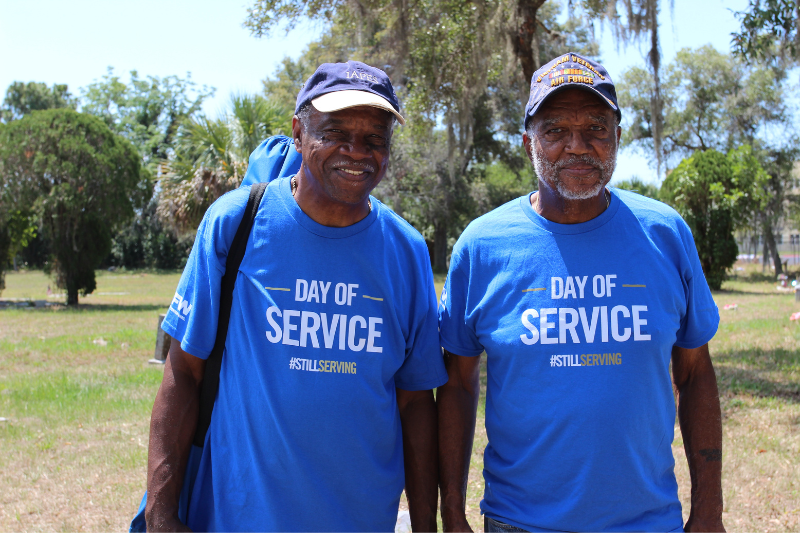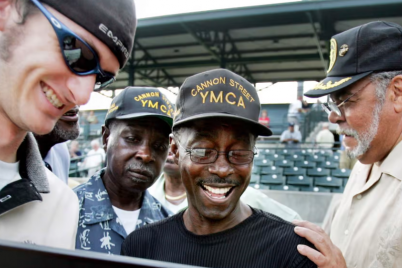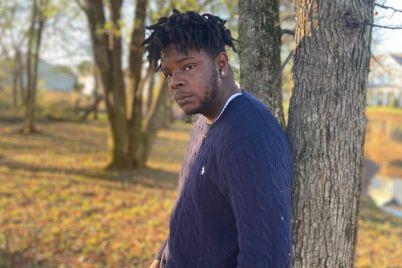VFW Post Commander Willie Williams, his brother, Trustee Louis Williams, and a team of volunteers chose to clean up Lincoln Cemetery as part of the post’s day of service on May 6.
BY KARIN DAVIS-THOMPSON, Staff Writer
GULFPORT — After three years in the United States Navy, Willie Williams went on to live a successful life with a career in Los Angeles.
A few years after his retirement, he decided to move back to St. Petersburg and wanted to get involved in the community. When a friend invited him to the Veterans of Foreign Wars (VFW) office, he decided to stop by and learn a little more. That was almost 20 years ago.
Now, in his second stint as commander of VFW Post 10174, his chapter is working on a project that speaks to the organization’s core mission, and it has taken on a meaning far greater than any of them ever expected.
The VFW was established in 1914 and chartered by Congress in 1936 to foster relationships between veterans of overseas conflicts. The organization works to ensure the sacrifices they’ve made are acknowledged, that their memory is preserved and that those who gave their lives in defense of the United States are honored properly.
Along with helping thousands of military families and providing programs and scholarship opportunities for youth, VFW chapters must agree to volunteer or complete service days at least three times a year.
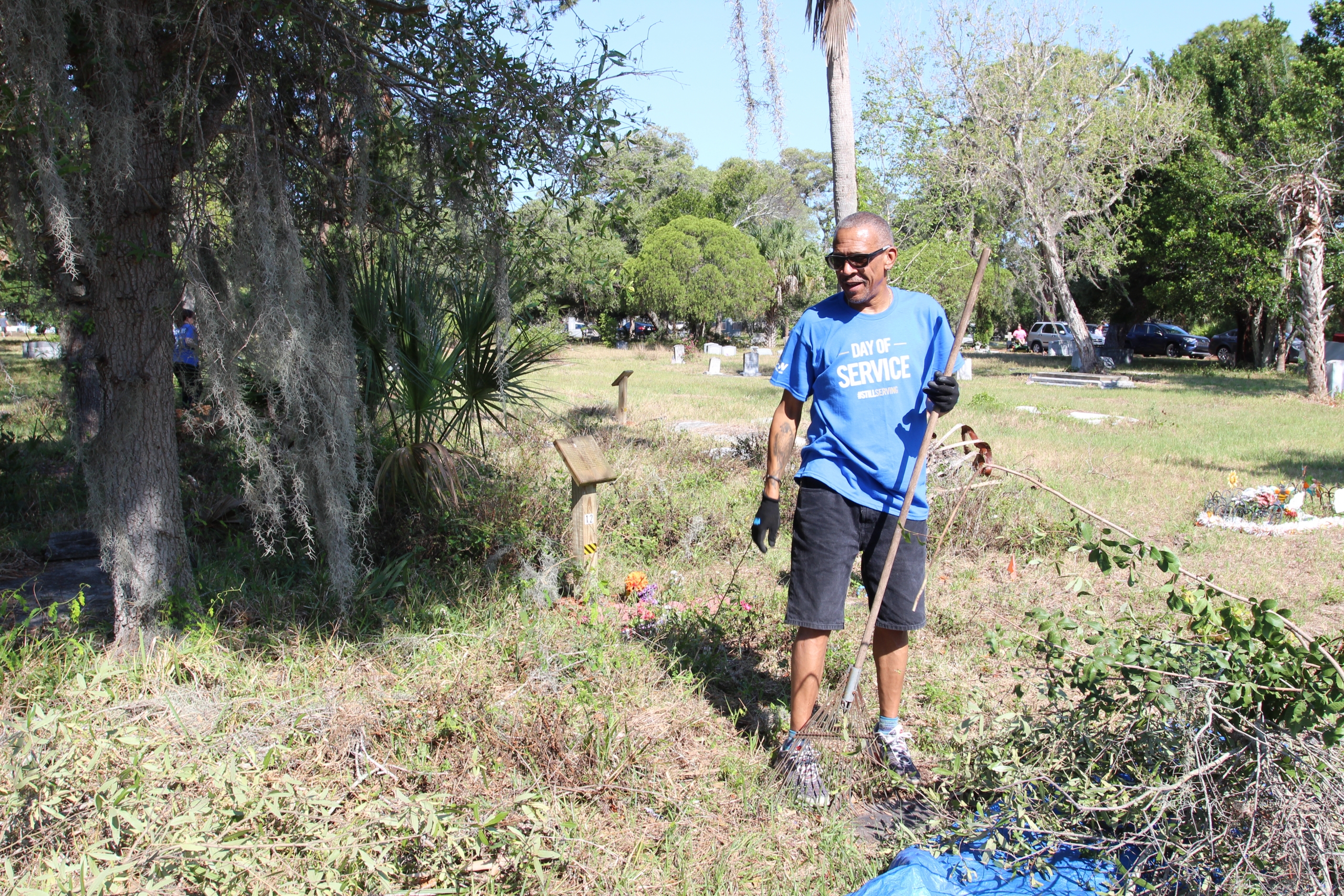
VFW member Chris Lewis lives in Cape Coral but works in St. Pete. He joined VFW Post 10174 a few months ago and quickly signed up for the post’s day of service.
Williams and his chapter recently decided to take on the cleanup of the Lincoln Cemetery, a historic, predominantly Black cemetery in Gulfport.
Lincoln Cemetery owes its existence to persistent patterns of racial segregation coupled with the pressures of the 1920s Florida land boom. As St. Petersburg’s municipal boundaries expanded during the height of the land boom, officials sought to contain the city’s Black community into a couple of segregated residential districts and remove their cemeteries to locations outside the city limits.
At that time, the three cemeteries with the majority of Black burials were Evergreen, Moffett, and Oaklawn. They existed on lands west of 16th Street South, most of which are now parking lots for Tropicana Field.
City officials issued condemnation orders for all three cemeteries in 1926, prohibited additional burials and called for the removal of bodies already buried at these locations. Many bodies were relocated, and many weren’t, only to be paved over or built on top of.
As the volunteers began cutting back overgrown tree limbs and cleaning off tombstones on the morning of May 6, they discovered something they had never imagined.
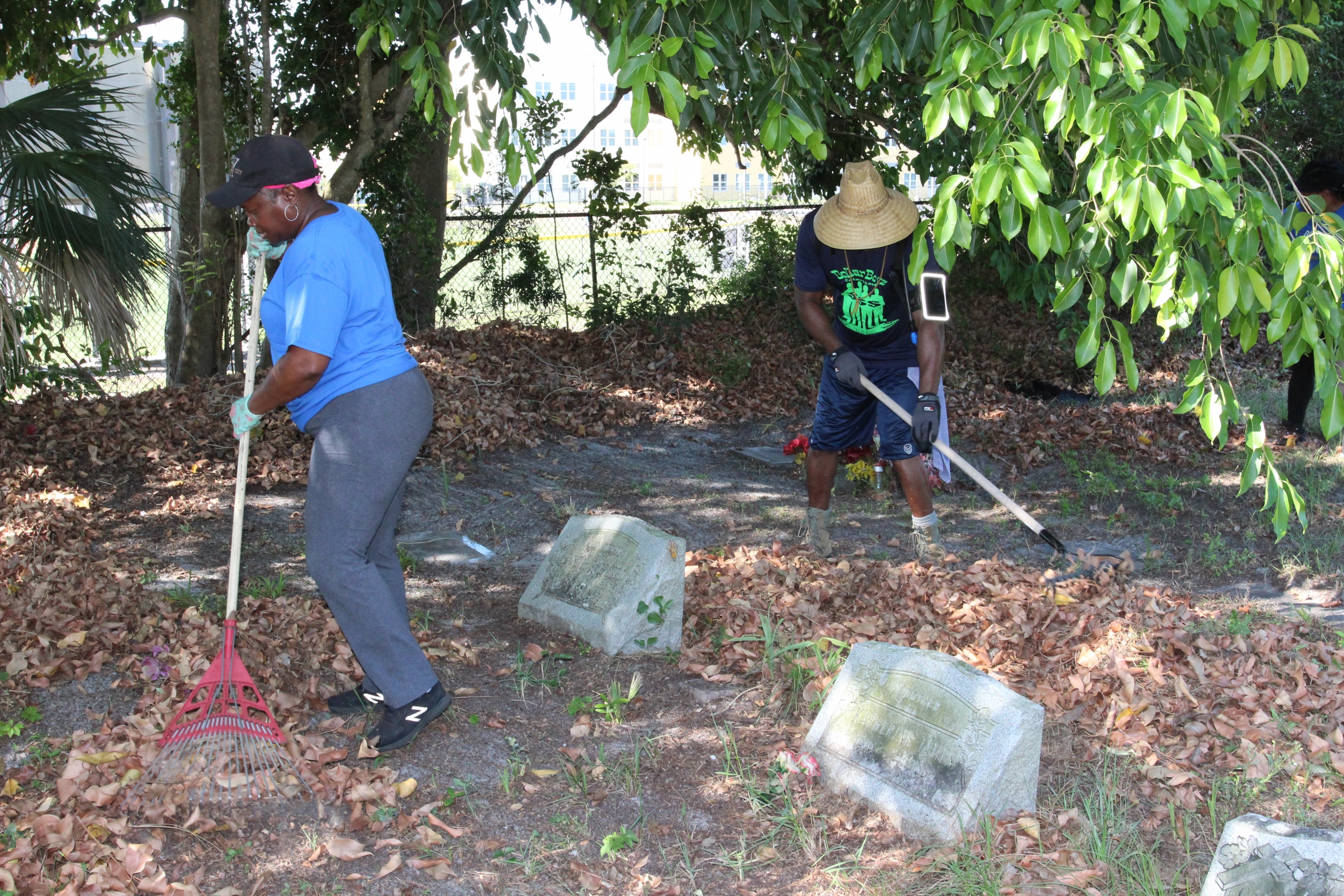
‘We found at least three soldiers buried from the Civil War,’ said VFW Post Commander Willie Williams.
“We found at least three soldiers buried from the Civil War,” Williams said. “I thought we might find World War I or World War II but never the Civil War!”
Williams said he hopes their work will call more attention to the cemetery so that more people realize the rich history there.
“Our young people need to know about it,” the 74-year-old said. “We need to talk about our Black soldiers buried there. People should know.”
Williams and his VFW crew uncovered 12 graves hidden under the grass. There are hundreds of overgrown graves within the almost nine-acre cemetery.
Initially, the chapter chose the cemetery because it was close to their building, and they believed it would be an excellent way to give back to the community. They never realized, however, just how much work needed to be done.
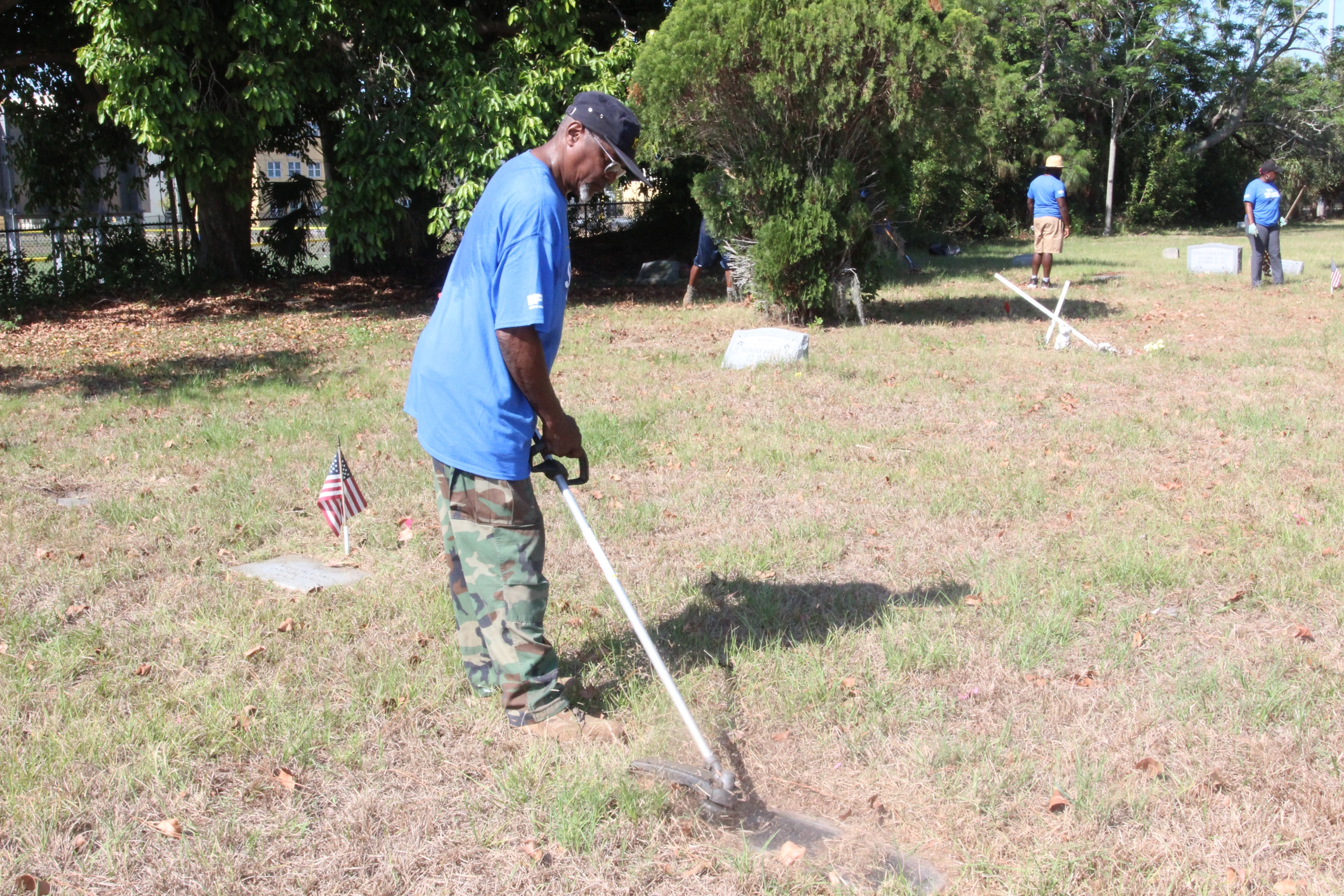
Williams and his VFW crew uncovered 12 graves hidden under the grass.
“It was too much to do in a day,” Williams said. “We cut back weeds only to realize there were actual graves there that you couldn’t see before. We are going back, and after that, we will be there to clean up every three months.”
***
Wanda Stuart sat for an interview with the African American Burial Ground & Remembering Project at the University of South Florida about the lost and erased cemeteries in St. Pete’s historically Black community.
She mentioned that her stepfather’s grave is in Lincoln Cemetery but didn’t know its whereabouts.
“My stepfather is in Lincoln Cemetery, and we can’t find his grave to this day,” Stuart said in the 2022 interview. “It’s an unmarked grave.”
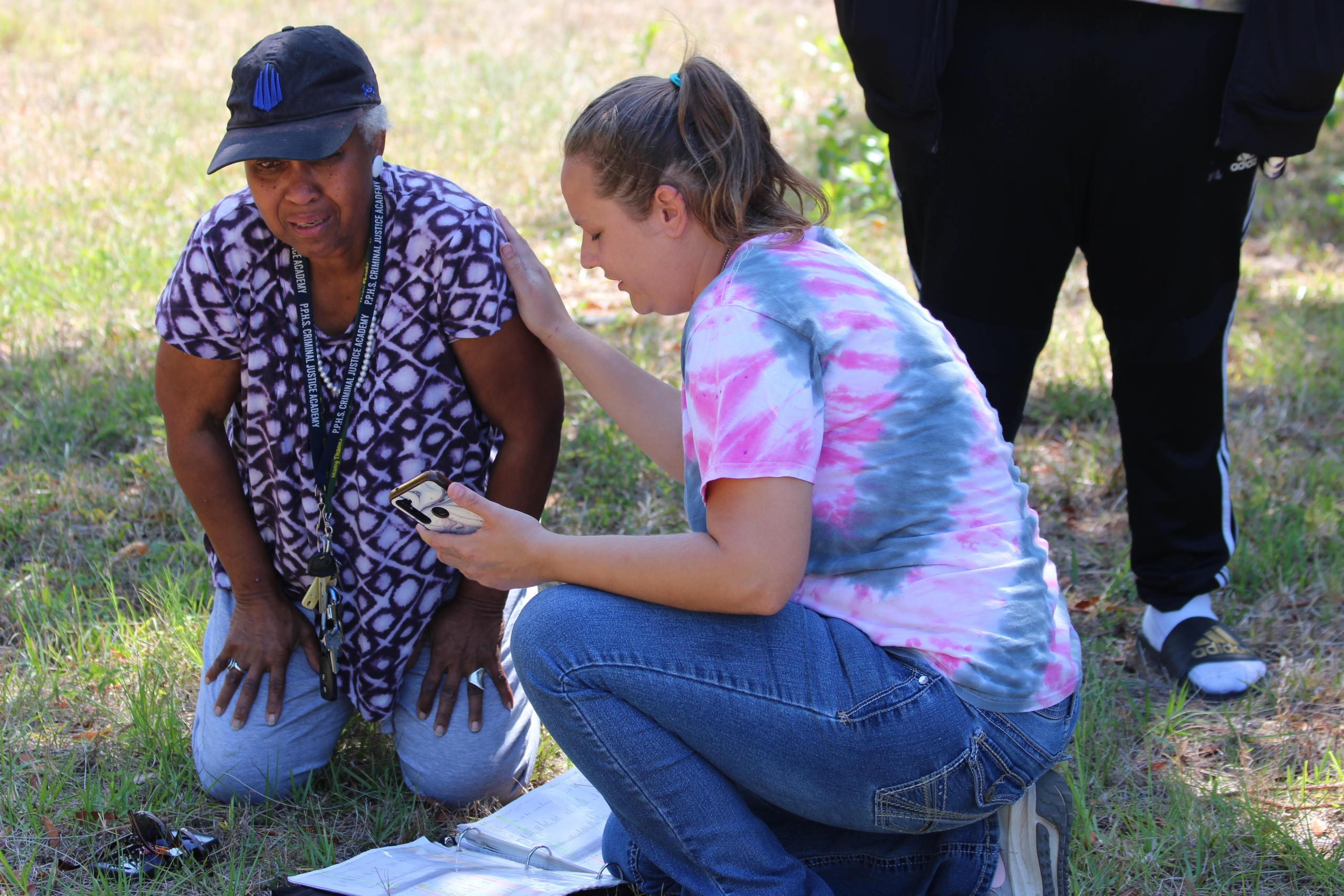
Wanda Stuart, with Lincoln Cemetery owner Vanessa Gray digging through burial records to find Stuart’s stepfather’s whereabouts.
The Weekly Challenger published her interview this past January, and it caught the eye of Lincoln Cemetery owner Vanessa Gray. After months of trying to contact Stuart to let her know she knew where her stepfather’s grave was, she got her phone number that morning from a photographer from The Challenger who was out there covering the VFW cleanup story.
Stuart dropped what she was doing and headed out to the cemetery.
“All of this brings up sad memories but at the same time glad memories in that we’re able to find him, and now [my brother] can rest and not have to think about it, not having a connection with his dad,” said Stuart, whose mother killed her stepfather after years of domestic abuse.
Stuart plans to place a headstone on her stepfather’s grave.

